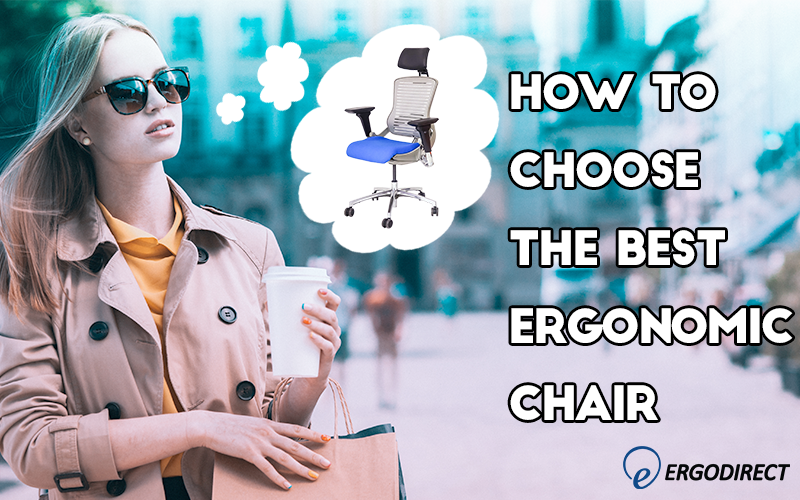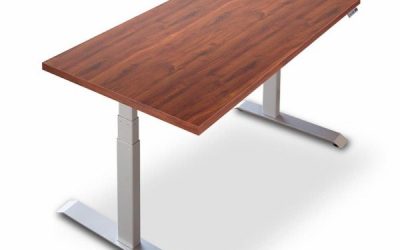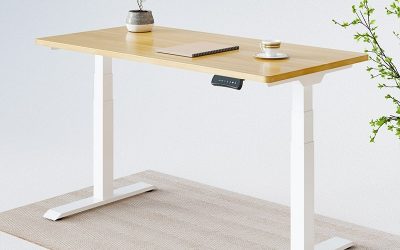After the computer, the most important items in your office are the chair and the desk. You may be tempted to spend the most on the desk, the primary office status symbol, but unless you’re actually seeing clients in your office, you don’t need a desk that looks great as much as you need a chair that makes you feel great. Ergonomic chairs are designed to do that. Because of that your office chair will be one of the most important purchases you ever make. You may spend half your waking hours in your office chair, at least on workdays, so it’s best to get the chair that will provide you with the most comfort and support for the money.
Traditionally, office chairs were one size fits all, essentially lacking any kind of adjustment save vertical height. This meant that workers had to adjust to fit their chairs, or at least try to. The result was millions of cases of repetitive motion strain that could have been avoided. The ergonomic chair is the reverse, it adjusts to fit the worker, and in the process it helps the worker be more productive, and avoid RMS injuries.
It may sound complicated but once you learn a little about ergonomic chairs, it’s not that hard to determine which chair you really need. Here’s how to buy an ergonomic office chair in six easy steps:
-
Understand what features ergonomic desks can provide
The average ergonomic office chair has four mechanical surfaces that can be adjusted, the seat pad, the back rest, and the two armrests. Theoretically, any one of these surfaces can be adjusted in up to 3 planes (X, Y, and Z). How much a chair costs usually depends on how many adjustments to these surfaces can be made, and how easy it is to make those adjustments. Every model is a tradeoff between feature sets. The right chair for you will depend on your body, your priorities, and your budget.
Almost every office chair has a seat pad height adjustment (the X axis) relative to the floor. The difference between models is how easy it is to adjust the height. The more expensive chairs have a cylinder which make it possible to raise or lower the seat height without having to fully stand up. The cheaper chairs usually don’t have this feature.
Seat pad angle adjustment (Z axis) is usually found on some mid-range and up chairs. (Y axis adjustment is extremely rare.) Seat pad forward and backward adjustments (Z axis) can make it easy to slide under the desk. This is not a must have feature but it’s nice to have.
Back rests can feature the ability to move up and down (the X axis) independently of the seat pad. This is another must have feature, since your back will need support. Some chairs let you adjust the X axis of the seat pad, like lowering the front below the back end, or the reverse. Some chairs let you move the backrest forward or backward relative to the seat pad (Z axis). Back rest Y axis adjustment is extremely rare.
Armrest height adjustment is another feature found on better chairs (X axis). People have different arm lengths so the arm rests need to adjust accordingly to provide the most comfortable. Some chairs feature arm rests that can move closer or further apart to adjust to people with different shoulder width (Y axis). Some chairs will also let you adjust the arm rests fonvard or backward (Z axis). Top end chairs will frequently offer all three adjustments.
-
Decide on what ergonomic features you need
The optimum feature set for you will depend on several metrics, including how tall you are, how long your upper and lower legs are, and how long your arm bones are.
Create a simple table with the following structure (sample data is included):
| Vertical (X-Axis) | Horizontal (Y-Axis) | Forward (Z-Axis) | |
| Backrest | X | X | |
| Seat Pad | X | X | |
| Arm Rests | X | X | X |
Note – An X indicates a required feature.
If you don’t understand what some of these features do, it may help to visit an office supply showroom and try several of the chairs with more features, to decide which features you need and which features you can live without.
-
Research what specific brand and model chair matches your feature set
Once you know what features you need, you can find which chairs offer those features by reading product descriptions online at the ErgoDirect site to read the feature sets on the latest ergonomic chairs available.
-
Choose reputable ergonomic brands and models
Read one or more reviews of each chair and check the feedback of each. Try to find a sweet spot that gives you 80% of the all the features you’d like for 20% of the cost. We recommend looking at brands like Office Master, Humanscale, and Neutral Posture.
-
Go to a showroom and try as many of the finalists as you can.
Make sure to try adjusting all the possible adjustments the chair offers. Also, try typing if possible. Above all, make sure that once you’ve adjusted the chair to fit you, it feels really comfortable.
Other factors to consider:
- Will the chair fit with the desk you’re going to use?
- Are the controls you will use often easy to reach and use? For that matter, are all the adjustments easy to reach and use? I-laving a feature isn’t the same as having a feature that’s easy to use.
Some ergonomic chairs offer one or more built-in mouse pads. These type of chairs work well with the table seating found in the bullpen table rows approach. When most computer users worked in their own office cube, they usually sat in the corner, which let the desk curve around the worker. Many people took advantage of the curved desk to place the mouse in a convenient location. A chair with a built-in mouse pad makes it possible to locate the mouse in a convenient location for table again.
Not all chairs will fit all sitting positions. Some of the broad woven polymer chairs have a curved seat pad that makes it impossible to sit with one’s legs crossed, as some people do.
-
Make a purchase based on how comfortable and easy the chair is to use
The priority factor in choosing which finalist should be purchased is how comfortable the chair is. No matter how many of the right features an ergonomic chair may have, if the chair isn’t comfortable to sit in, it’s the wrong chair.
Never quit looking for the perfect chair
After centuries of stagnation, the office chair is caught in a state of constant evolution. We can only guess what technologies will be developed for future generations of office chairs. Eventually, even today’s best ergonomic chairs will be obsolete, so check out new ergonomic chairs periodically, and accept the fact that upgrades in ergonomic chairs may come as often as upgrades for desktop computers.



